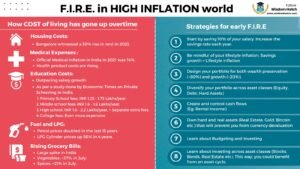HEAVY TAXES, But we get NOTHING in return?
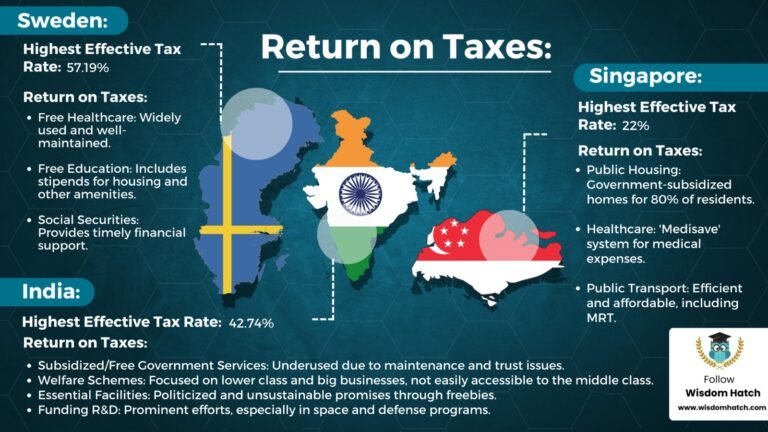
Introduction:
- Median Entry Salary offered by IT firms in 2012: 2.45 Lakhs
- Median Entry Salary offered in 2022 : 3.55 Lakhs
This is a 2.5-3% growth in salary every year.
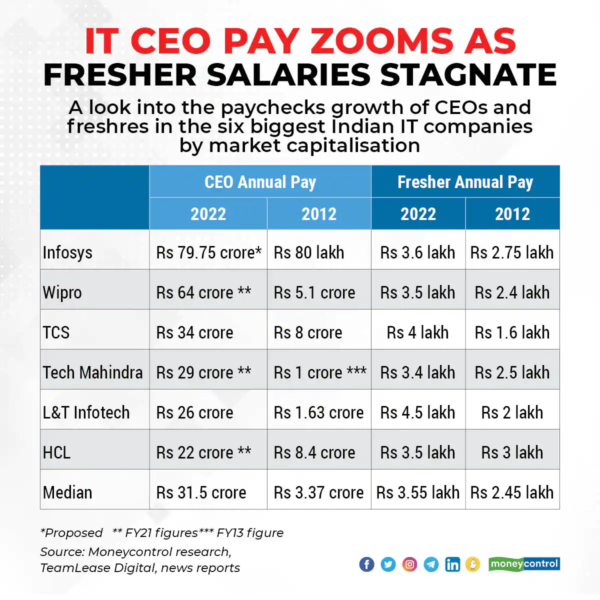
At the same time, the fees for schools have gone up exponentially in the last few decades, significantly outpacing the salary growth.
- As per a study done by Economic Times on Private Schooling in India [2],
- Primary School fees: INR 1.25 – 1.75 Lakhs/year.
- Middle school fees: INR 1.6 – 1.8 Lakhs/year.
- High school: INR 1.8 – 2.2 Lakhs/year, + Separate extra fees
- College fees: Even more expensive
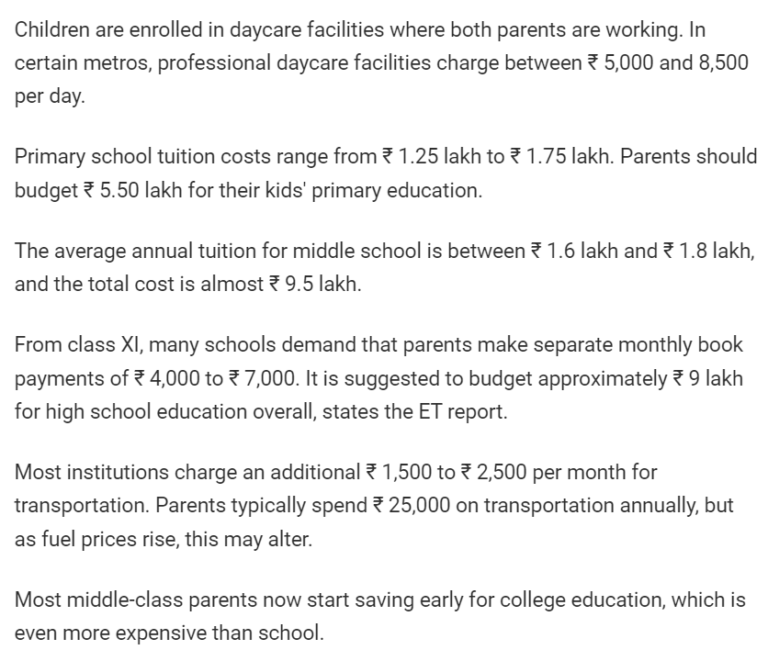
Parents are finding it hard to even save up for their children’s education and even opting for loans to ensure the same.
These salaried individuals pay hefty amounts in taxes. And at the same time, they struggle to take care of their critical expenses.
Does this mean that the Tax Culture in India is TOXIC?
In this blog, we will be looking to answer 5 key points on
- What is the Current Taxation Regime in India
- What do you get in return after paying taxes?
- Why is the tax burden rising in India?
- How the taxes could be lowered?
- Future of Tax Culture in India?
What is the Current Taxation Regime in India?
1. Old Tax Regime
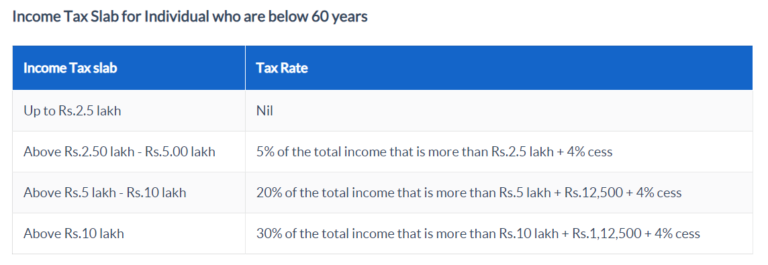
2. New Tax Regime (Default)
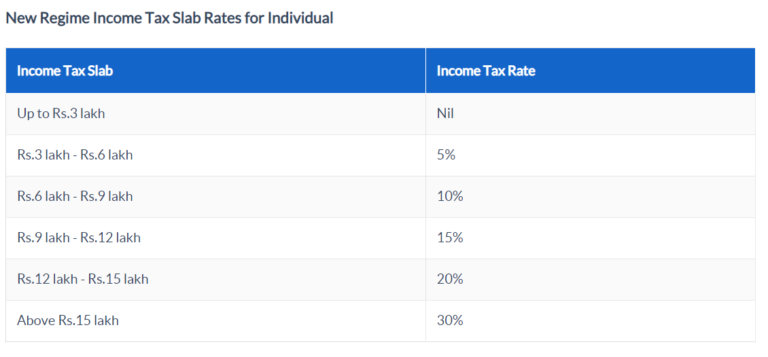
3. For Domestic Companies:
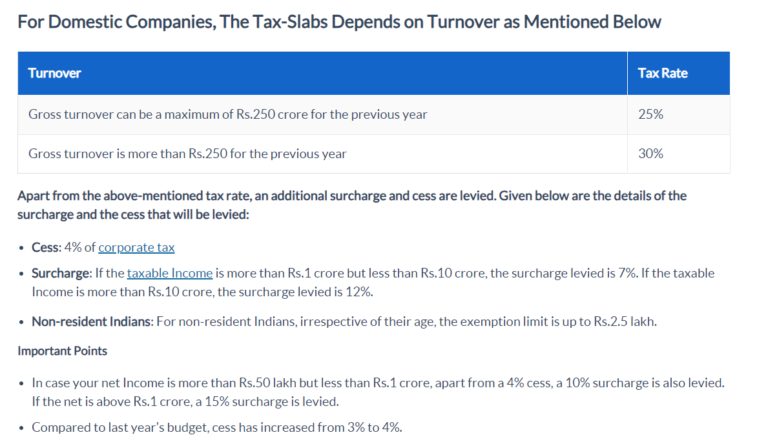
What do you get in return after paying Taxes?
This ROI on taxes can be calculated by understanding two things:
- The taxes you pay
- What you get in return.
Let us do a deep dive across Swedish vs Indian taxes. Of course, this is not an apples-to-apples comparison, but it allows you to understand an important concept: return on taxes.
Income tax in Sweden vs India: Case study
From the tax chart below, you can see countries like Sweden have an even higher taxation structure than India (India has an effective highest tax pay of roughly 40-45%) [4].
But does this mean that India’s taxation structure is better than Sweden’s?
The simple answer is NO.
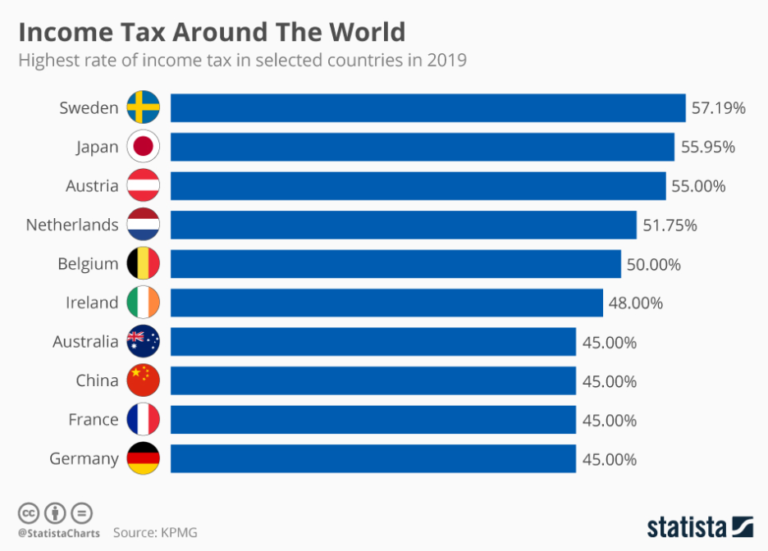
Working through the Swedish example we can see that while 57% is the highest effective tax rate [5], but as per a study done by VOX as shown below:
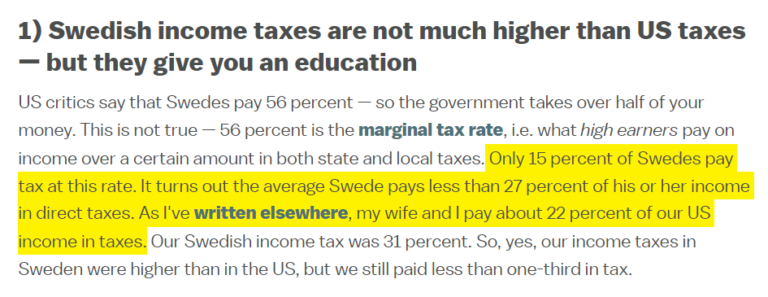
So, the majority of the Swedes pay less than 27% taxes. In India, we would be paying somewhere around 20% as direct taxes.
Now in Sweden, they get the following facilities:
- Free Healthcare: It is well maintained, and majority of people avail the same, unlike the situation in India.
- Free Education: You also get a stipend for housing and other facilities as well.

3. Social Securities: Provides financial support when it is needed [6].
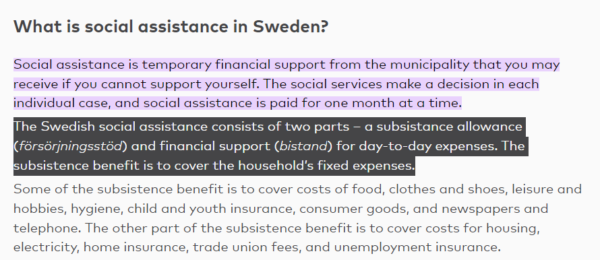
Therefore, Sweden is getting a lot of facilities for the taxes that are paying to the government.
But the situation in India is the opposite. Most taxpayers are not able to avail any of the benefits from paying taxes (due to poor maintenance and feasibility)
Doing a Cost-Benefit-Analysis in India, would show that the Tax structure in India is punitive.
Now as an Indian citizen, try to answer these questions:
- Do you use the health services provided by the government?
- Do you send or want to send your children to a government school?
- Do you avail rations from public distribution schemes?
As a middle class individual in India, your answer to these questions are most likely a NO. But you are the one who is paying the majority of the taxes in India.
In fact, you might be paying additional tax on luxury products which would mean you are paying even more taxes than the average person.
Let’s look at some data to back up our claims:
The data below tells us that less than 33% of the rural population and 26% of urban population depend on government hospitals [7].
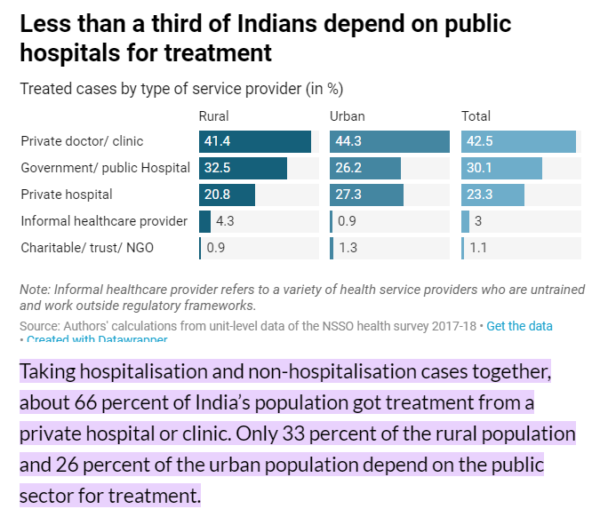
Similarly, as per the article below, the number of students using government school facilities is also coming down [8].

These data tell us that most taxpayers in India are not getting an direct return from paying taxes to the government and that the trend seems to just be getting worse
Why is the Tax Burden rising in India?
It can be clearly seen from the chart below that the tax rates in Sweden are being brought down [9].
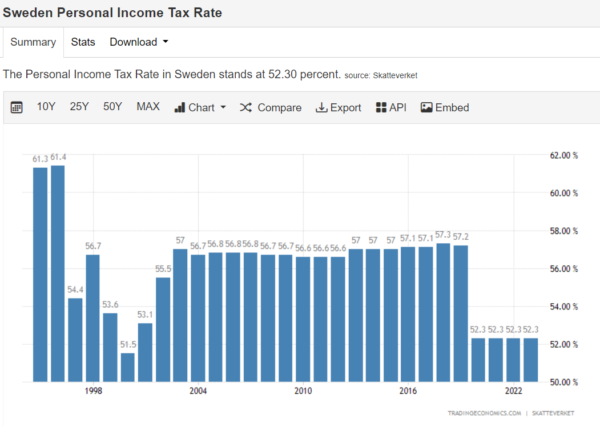
However, the opposite is happening in India [10].
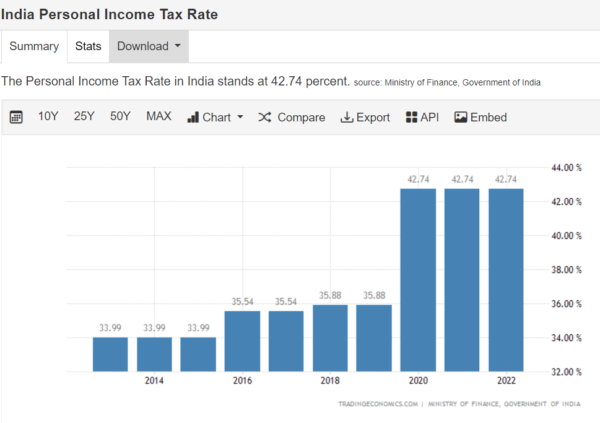
Both direct taxes as well as indirect taxes (such as GST) are also rising. India’s GST rate is one of the highest in the world at a maximum rate slab of 28%.
Similarly in terms of investment taxes, indexation benefits have been removed and long term capital gain taxes are also rising [11][12][13].



Now let’s look at the tax base in India (the number of people paying taxes).
Let’s break down India’s population to focus on this part:
- India’s Total Population – 140 crores
- Average Life Expectancy – 70 years
- Assume, 50% population are eligible to pay taxes (ideally between roughly 20-60 years of age)
- Therefore, the rough tax base should be around 70 crores
So, is this the actual tax base of people paying taxes?
It’s not even close. The actual amount of people paying taxes is around 8 crores. This is not even 15% of the population that should be paying taxes.
While in Sweden, around 6.7 million people out of the 8 million taxable individuals are paying taxes [14].
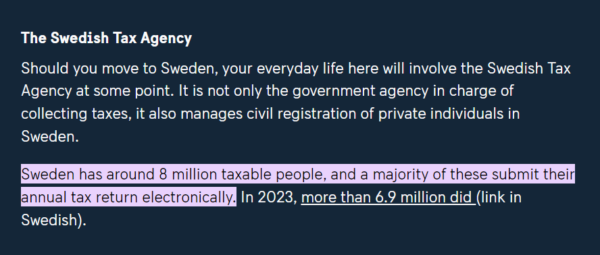
Therefore in India, the Tax Incidence (measure of who ultimately pays or takes on the tax burden) comes out to be the middle class.
There are 3 main factors:
1. Increase in unproductive spend:
i. Productive spending:
- When the government uses its funds to invest in projects, programs, or services that have long-term benefits for the country.
- These investments usually help boost economic growth, create jobs, or improve the overall well-being of citizens.
- Examples of productive spending include building infrastructure like roads, bridges, and schools, investing in healthcare and education, and supporting research and development.
ii.Unproductive Spending:
- When the government uses its money on things that don’t contribute much to the economy or the well-being of its citizens in the long run.
- Unproductive spending often includes excessive bureaucracy, wasteful projects, or subsidies that don’t lead to positive outcomes.
- For instance, distribution of freebies.
- The increase in unproductive spending has led to heavy tax burdens.
2. High Debt in the World:
- The world is sitting at a record amount of Debt. The US Debt amounts to more than 30 trillion dollars.
- For the government to pay back their debt, they will have to increase their revenue and to do so they will have to collect more tax.
- Read our blog post on the Collapse of the US Debt to get a broader understanding of the US Debt situation.
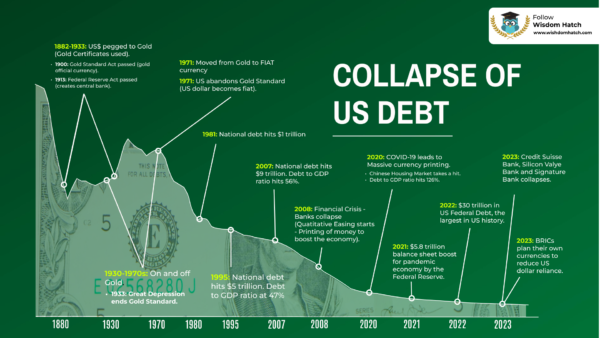
3. Taxation have peaked:
- The effective personal tax rate in India sits at almost 43% as of 2022 (as per the chart discussed above [15]).
- This has already raised concerns on the average taxpayer, and therefore the tax rates can’t be increased much more.
- Therefore, the overall tax burden will continue to rise in India.
How can the Taxes be lowered?
There are 3 main verticals that the government can look into to lower the taxes in India:
1. Increase the Tax base:
- As it stands less than 2% of India’s total population are actually paying taxes [16].

- The best way to increase the tax base would be by including more rich farmers and organizing the agriculture industry to pay taxes.
- According to a 2012 RTI filing, there were 8 Lakh people with more than 1 Cr in Agriculture income, who paid ZERO taxes in India [15].
- 1% farmers in India own more than 10 hectares of land. And they are by no standards poor.
- And, as per a paper by the erstwhile Planning Commission, if we could tax even 0.04% richest farmers, it would generate 50,000 Cr of tax gains.

2. Increase in Productive Spending:
i. This could include building:
- Infrastructure like roads, bridges, and schools,
- Investing in healthcare and education, and
- supporting research and development.
ii. Examples of productive spending in the past:
- Mahatma Gandhi National Rural Employment Guarantee Act (MGNREGA): Guarantees 100 days of wage employment, reducing poverty and boosting rural infrastructure [17].
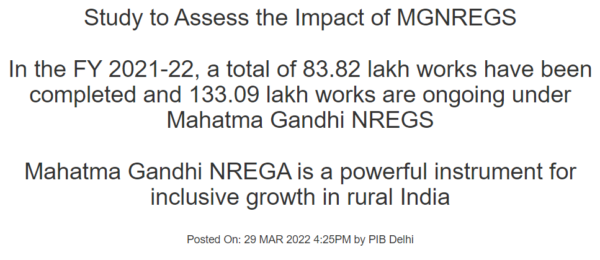
- National Highways Development Project (NHDP): Upgrades and expands the national highway network for better connectivity [18].

3. Increase employment in India:
- Creating more Jobs in India can lead to an increase in India’s GDP through larger consumer spending.
- This can also lead to an increase in the tax base.
- More jobs can be created through productive spending on sensible projects as seen below [19].
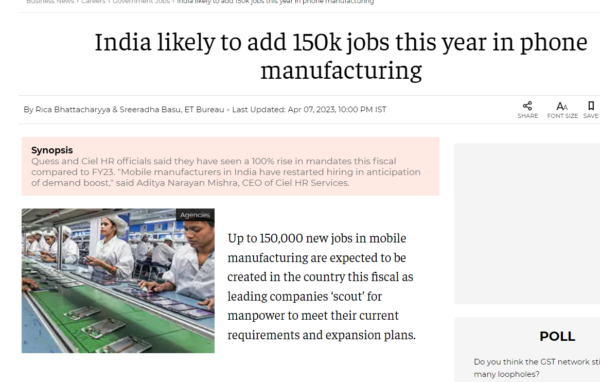
What does the Road Ahead look like?
Freebies Economy:
Recently, there were waves of news on freebies being distributed by political parties to gain people’s trust before the elections [20][21].
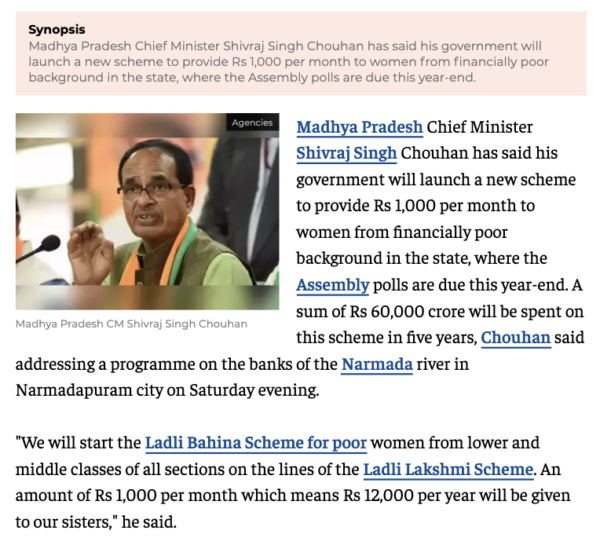
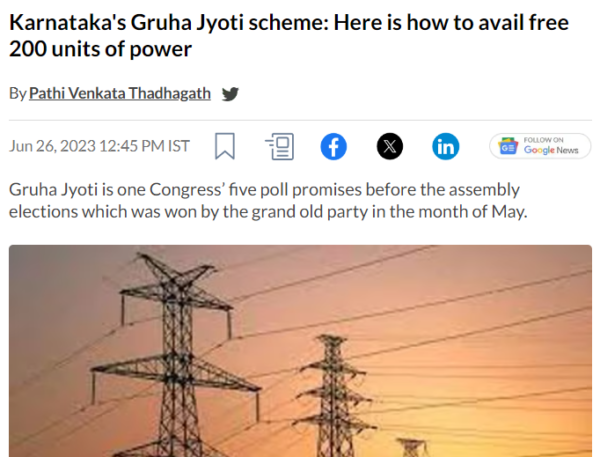
Below are the budget allocated to specific states for distributing freebies:
- Karnataka’s Freebie Budget: 50,000 Crore
- Punjab’s Freebie Budget: 25,000Crore
- Andhra Pradesh, WB, MP: 67,000 Crore
All this spending on freebies (which are unproductive spends as it has no long term positive impact on the Indian economy), sets a bad precedent going forward and at the end of the day, the taxpayers will be the one who will have to bear the cost.
Direct impact on the middle class:
- Further, all this burden will be pushed to the middle class, people who don’t have a lot of collective power.
- The upper class and the rich business class get to buy distressed assets, heavy loans at good rates and other good benefits by paying their taxes.
- Similarly, the lower class segment in India will also get schemes such as the Public Distribution System (PDS), hospitals, education, freebies etc. which will all benefit them largely.
- Tax free agricultural income for farmers has been in play for a long time.
- But the remaining population, which comprises the middle class, are just left with the negatives like TDS where Tax is deducted at source from your active income.
- This situation will not change, since as seen above the effective tax rates just keep rising.
Headline Management by the government:
- Now there will soon be instances where people will start speaking out when the tax rates become unbearable.
- To avoid such instances the government will start raising news through Headline Management.
- For e.g. as per India’s CPI Annual Food Inflation (%) Chart as shown below [22].
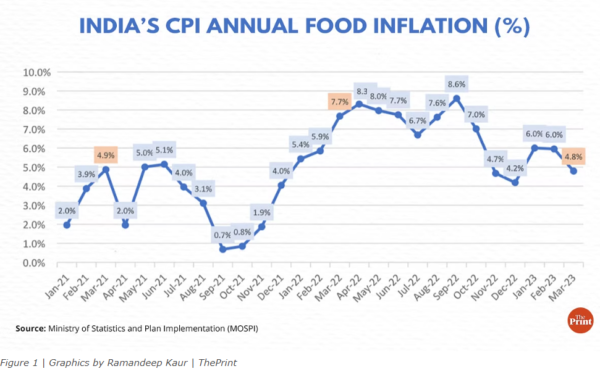
From the chart the last 3 years food inflation rate in January 2021, 2022, 2023 were 2%, 5.4% and 6%.
So as per this chart the food inflation in India should not have gone up by more than roughly 15% in the last 3 years.
Now ask yourself these questions:
- How much has your grocery bill increased in the last 3 years?
- How much has the cost for eating out gone up by?
- How much have the rates on Swiggy and Zomato gone up by?
This will show that the food inflation in India over the 3 years has definitely not just gone up by 15% and that it’s way higher.
To get this point straight, let us look at how the government makes money.
There are 3 primary ways:
- Increasing Direct Taxes: This method is harder to implement since this will raise concerns within the people.
- Increase Inflation in the economy: This is exactly what was discussed in the last section about the fact that the CPI Food inflation in India has gone up at a much faster rate than it was shown to be.
- Increase Indirect Taxes: GST for example has different tax rates for different types of products. This has made the concept of indirect taxes extremely complicated to grasp.
Now going forward,
What can you as a Taxpayer do?
Ensure to follow these key points:
1. Become an informed citizen:
- Have an opinion and be open to digesting information and listening holistically.
2. Get united:
- Work together, raise public awareness.
3. Understand the difference between a productive expense and an unproductive expense:
- Ask questions and carry out a Tax-Benefit-Analysis.
- Understand what type of government investments and schemes benefit you directly or indirectly.
4. Upskill and Learn about Investing:
- To protect and grow your wealth, learn how to invest at least with a goal to protect your wealth from inflation.
[For investors who are looking for advanced techniques with a focus on better returns, check out this course on Stock Market Investing which covers all the aspects from Fundamental Analysis to key concepts like Macroeconomics and Wealth building.]
In Conclusion,
India is a country where the tax incidence is very high (all concentrated on the middle class) and the tax base (number of people paying taxes is very low).
Down the line, the government will need a lot of money to keep up with its expenses and this will have a heavy toll on its existing taxpayers. What the government can do is prioritize their expenses on more sensible, productive and high return on investment projects to grow the economy organically,
1. Rising school fees in India strain parents’ finances as salaries lag behind.
2. Middle-class taxpayers in India often receive little benefit from high taxes, unlike countries like Sweden, where services like healthcare and education are provided.
3. India’s tax rates keep increasing, while the tax base remains limited, primarily affecting the middle class.
4. The middle class bears the brunt of the tax burden due to a lack of unity and advocacy.
5. To increase the tax base, the government could include wealthy farmers, but this is challenging due to powerful landowners.
6. Public discontent over high taxes may lead to government attempts to manage public opinion through headlines.
7. Real food inflation in India is higher than official figures suggest, impacting citizens’ expenses.
8. The government can generate revenue through direct taxes, inflation, and indirect taxes like GST.
9. As a taxpayer, it’s essential to stay informed, unite, and differentiate between productive and unproductive government expenses.
10. Upskilling and investing can help protect wealth from inflation.
[1] https://www.ndtv.com/business/what-does-it-cost-to-educate-a-child-in-india-and-how-to-plan-for-it-3272408,
[2] https://www.moneycontrol.com/news/business/it-ceo-pay-shot-up-835-in-a-decade-while-freshers-salary-grew-45-8602591.html,
[3] https://www.bankbazaar.com/tax/income-tax-slabs.html,
[4] statista.com/chart/19734/income-tax-around-the-world/
[5] https://www.vox.com/2016/4/8/11380356/swedish-taxes-love,
[6] https://www.norden.org/en/info-norden/social-assistance-sweden
[7]https://www.livemint.com/news/india/less-than-a-third-of-indians-go-to-public-hospitals-for-treatment-11588578426388.html
[8]https://news.careers360.com/less-50-students-in-government-schools-first-2012-13-govt-data
[9] https://tradingeconomics.com/sweden/personal-income-tax-rate
[10] https://tradingeconomics.com/india/personal-income-tax-rate
[11] https://inshorts.com/en/news/indias-gst-rate-is-the-highest-in-the-world-1498892383970
[12] https://www.thehindu.com/business/indirect-tax-kitty-grew-72-to-1382-lakh-crore-in-2022-23/article66794168.ece
[13] https://timesofindia.indiatimes.com/business/india-business/govt-removes-long-term-tax-benefit-for-debt-mutual-fund-investors/articleshow/98980098.cms?from=mdr
[14] https://sweden.se/life/society/taxes-in-sweden
[15] https://theprint.in/economy/more-indians-filing-tax-returns-but-only-1-2-of-population-actually-pays-income-tax-shows-govt-data/1686818/
[16] https://economictimes.indiatimes.com/news/economy/agriculture/do-rich-farmers-need-tax-exemptions/rti-makes-a-point/slideshow/70479633.cms
[17] https://rural.nic.in/en/press-release/study-assess-impact-mgnregs,
[18] https://en.wikipedia.org/wiki/National_Highways_Development_Project,
[19] https://economictimes.indiatimes.com/jobs/government-jobs/india-likely-to-add-150k-jobs-this-year-in-phone-manufacturing/articleshow/99305583.cms?from=mdr
[20] https://economictimes.indiatimes.com/news/politics-and-nation/in-election-year-mp-cm-chouhan-announces-scheme-to-provide-rs-1000-per-month-to-poor-women/articleshow/97413356.cms?from=mdr
To take action towards your goal of Retiring Early, check out this blog post on How to Achieve FIRE in a HIGH INFLATION world

